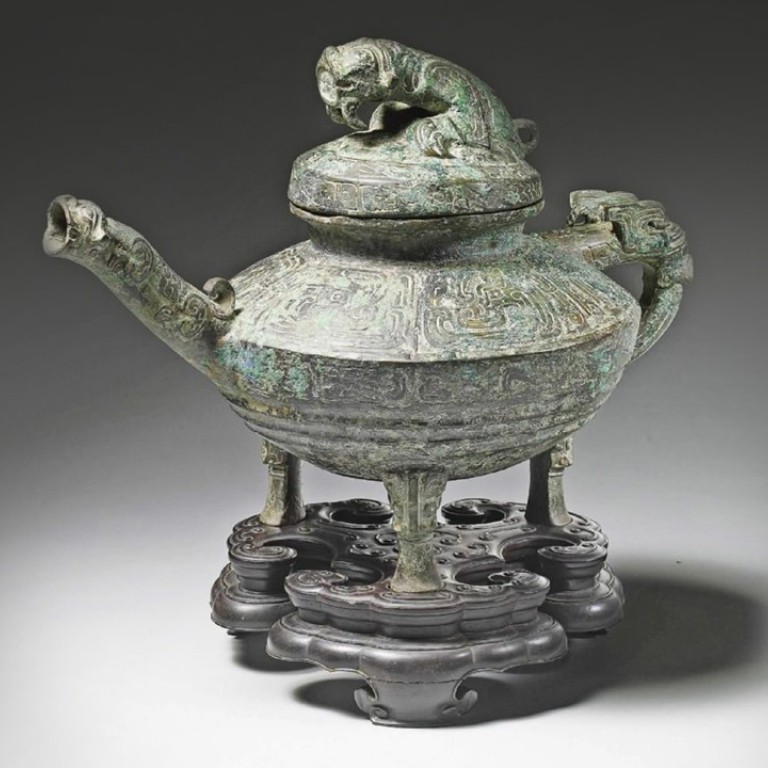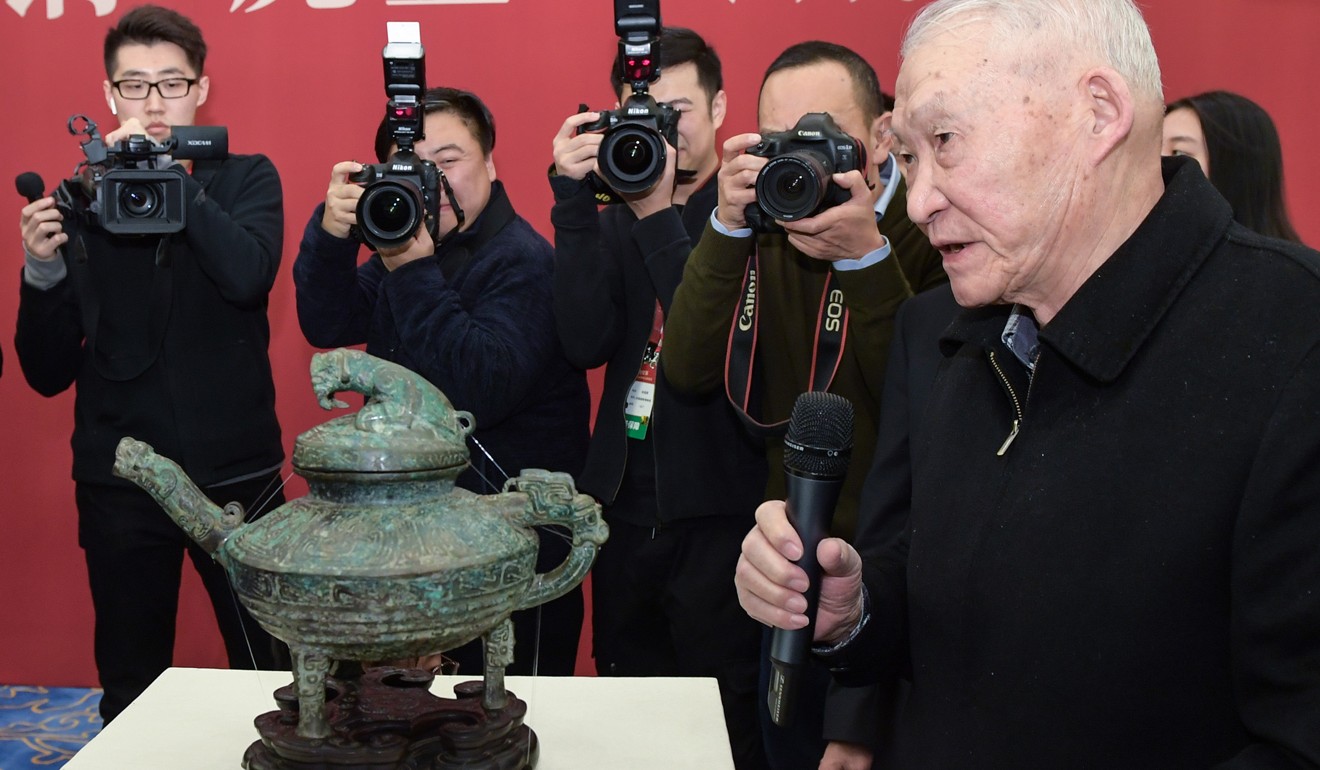
Ancient bronze vessel looted from Old Summer Palace in 1860 returned to China
- The 3,000-year-old relic was sold at auction in Britain for US$515,000 in April but the buyer decided to donate it to the Chinese government
- It was taken by a British Royal Marines captain and had been in the possession of his descendants. Now it’s on display at a museum in Beijing
A 3,000-year-old bronze vessel that was taken from the Old Summer Palace in Beijing has been returned to China after more than a century overseas, according to the State Administration of Cultural Heritage.
On Tuesday, it was formally placed on display at the National Museum of China in the capital, where it is now part of the permanent collection.
A representative from Canterbury Auction Galleries, which sold and helped to return the item, told news site Thepaper.cn the buyer had recognised the deep significance of lost artefacts for Chinese.
After it was donated, the vessel was kept at the Chinese embassy in London before it was formally handed back to the cultural heritage administration on September 21.

The ceremonial vessel dates back to the Western Zhou Dynasty (1046-771BC) and is decorated with miniature tigers on its spout, handle and lid. It is believed to be one of only seven such vessels, five of which are held in museums.
It was taken by British Royal Marines captain Harry Evans during the ransacking of the Old Summer Palace by Anglo-French troops in 1860, and had been in the possession of his descendants before it was auctioned.
China’s ‘stolen’ cultural relics: why the numbers just don’t add up
The auction of the rare artefact was strongly opposed by the Chinese government, which had been working to get it returned to China, but Canterbury Auction Galleries went ahead with the sale.
Unveiling the new museum exhibit, Liu Yuzhu, head of the administration, said Chinese historical artefacts lost overseas were an important part of China’s cultural heritage.
China views the loss of these relics as a potent source of national humiliation and as a reminder of the destruction inflicted by foreign armies. The government estimates that more than 10 million historical items were taken from China during its so-called century of humiliation between 1849 and 1949, when the country was repeatedly invaded by foreign powers.
Social media buzz around TV series on Chinese museums that could highlight country’s 1.67 million ‘stolen’ objects
In recent years, Beijing has led numerous high-profile campaigns aiming to get its stolen artefacts returned from overseas, as a symbol of the country’s growing economic and political clout.
Many objects remain in the world’s most prestigious museums, including the British Museum and the Palace of Fontainebleau in France, as well as in private collections.
But billionaire Chinese collectors have snapped up many items in recent years, including a porcelain “chicken cup” that was bought for US$36.3 million at an auction in Hong Kong in 2014.

